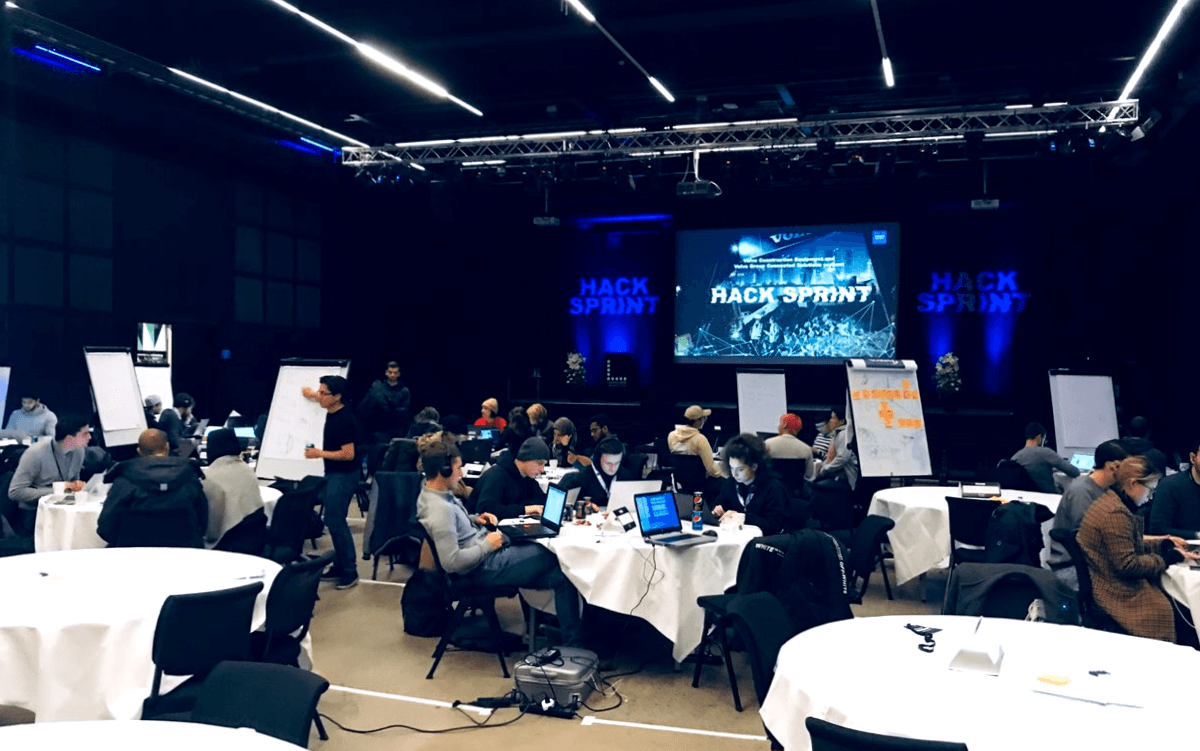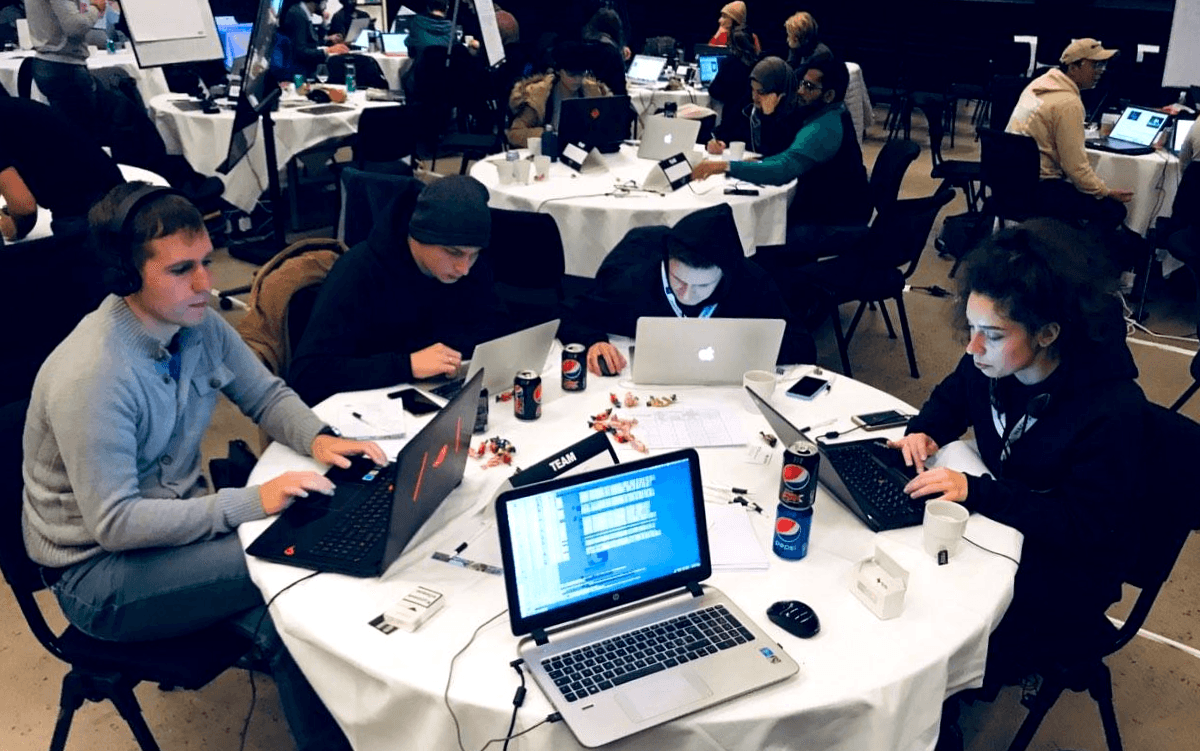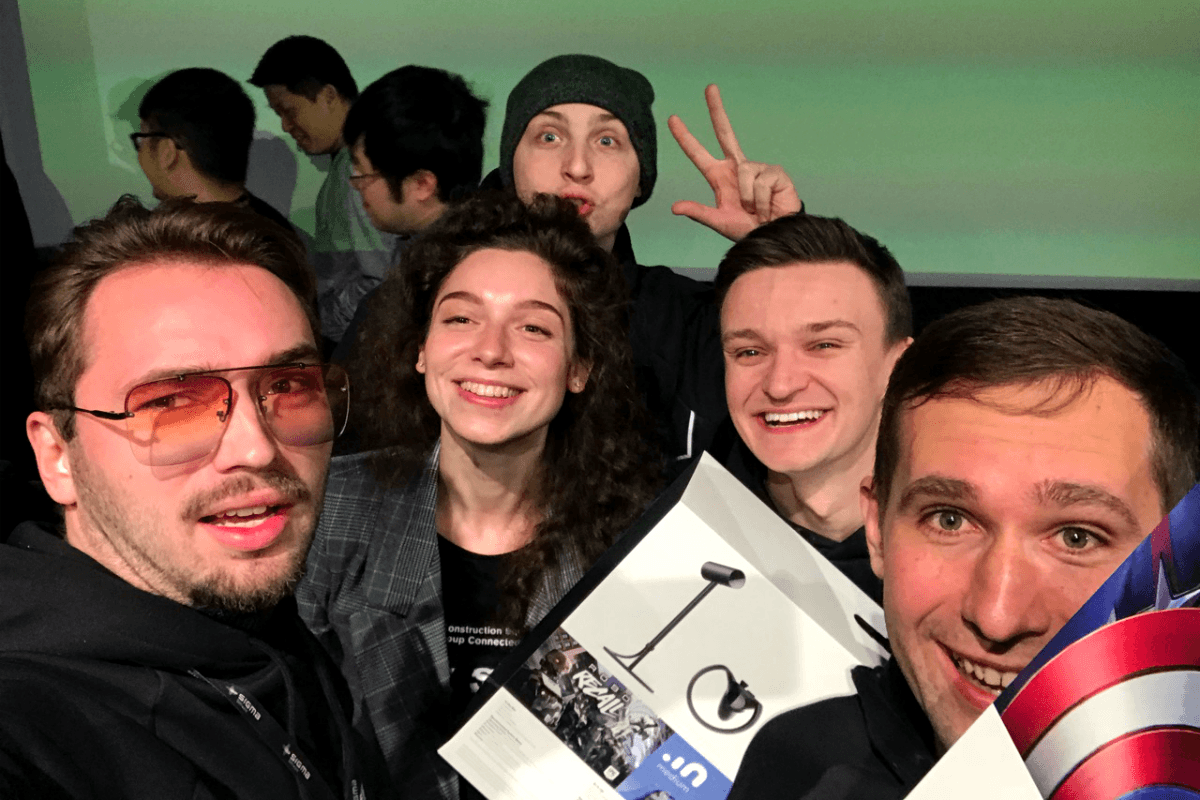
USA
Thank you for reaching out to Sigma Software!
Please fill the form below. Our team will contact you shortly.
Sigma Software has offices in multiple locations in Europe, Northern America, Asia, and Latin America.

USA

Sweden

Germany

Canada

Israel

Singapore

UAE

Australia

Austria

Ukraine

Poland

Argentina

Brazil

Bulgaria

Colombia

Czech Republic

Hungary

Mexico

Portugal

Romania

Uzbekistan
In 2018, Sigma Software team took part in Construction Equipment Volvo x Hack Sprint Hackathon that gathered international teams in Lindholmen to generate innovative ideas focused on undercarriage inspection automation. Sigma Software team took the first place and demonstrated the best solution created from scratch after 72 hours of live coding. Tatiana Osetrova, one of the team members, shares her advice on how to make your success on a Hackathon more feasible.
Hackathons are gaining popularity around the world. No wonder – this is a great opportunity to get out of your comfort zone, challenge yourself, try and learn something new, share experience, meet interesting people, and finally, get an adrenaline rush, since every Hackathon is a competition, anyway. Undoubtedly, every team coming to a Hackathon wants to win. However, some of them make hurtful mistakes that may prevent them from getting well-deserved laurels. Let`s take a look at the most common ones?
The preparative stage is of huge importance and in many respects can become a pledge of future success! Do not be lazy to invest your time, so you do not spend precious hours and minutes at the Hackathon on what you could do in advance.
First, setup a communication with organizers: ask questions, find out all the nuances. Will they provide you with the servers, repositories, what tools and approaches are allowed to use, and which ones would be unacceptable? Will there be mentors, support teams, representatives of business or end users, whose problem you are going to solve during the competition? Any information may be useful to you to immerse yourself in the future task and domain. Do not neglect communicating with the organizers during the Hackathon as well; their answers may give you the cue if you are moving in the right direction.

Second, think about what task will be assigned to you. There are Hackathons where the participants are narrowed by a general direction only. The other format – when teams are solving real tasks and problems. Get ready for both! Give special attention to understanding the domain you gonna work in. So that you have several ideas in mind what concept to build at Hackathon.
Read about the organizer and their business vertical, imagine what hot spots they may want to solve, write down the list of ideas of how these problem areas could be cured. We did so, and one of our ideas actually came true during the Hackathon! So, while other teams started from the very beginning, we already had some background on the matter.
Without the right people, you’re going to be driven back and will hardly be able to get a working prototype. I believe a strong team is a team, where all members are cross-functional, ready to cope with new and unusual tasks, quick-learners that have no fear to try new approaches on the go. A good team is a team, where people complement each other. It is quite a rare case when you may need two specialists with the same competence. Think over all the stages of product creation and what expertise is needed to cover them, and select your team based on those needs.
People, who are close-minded, not ready to compromise and too sensitive to criticism, can hardly become efficient team players. Therefore, take a close look at soft skills when choosing your teammates. Without motivated people that want to make a difference and ready to go an extra mile, winning is impossible.
When you already have a clear picture of your future product, it is quite difficult to refrain from topping it up it with a bunch of features. It is dangerous though: trying to handle everything at once, you can come to the final with a completely unfinished product. Think big, but start small. Determine the main business model and focus on it from the very beginning. Do your best to split up your project into smaller features. In this case if you don’t have enough time to finish, you’ll at least have something. If you have some free time, you will be able to implement the rest of your ideas, just try to sensibly evaluate and prioritize them.
In lean startup terminology, this is called an MVP.

Quite a usual story: when starting on a task, many teams, especially first-timers, waste a lot of time to make their first step. They draw concepts, go through every little detail, make long lists of possible features, set up working spaces, run brainstorms, assign roles in a team – do everything except for actual work. The longer your rump-up period takes, the lesser chances to get to the finish line with good results.
Do some of these preparations beforehand (see point 1), some of the others just skip and immediately dive deep into solving your task. Define the roles in the team in advance so that everyone knows, which part of the work they are responsible for, and could get started at once. Make sure there are no situations when two or more people work on the same task, stepping on each other’s heels, while no one covers another one.
Remember to take regular breaks to have a drink, stretch your body, and blow the cobwebs away. Sometimes walking away from your task and short change of pace help you to solve your problem and break through a tricky issue.
It may happen that in the middle of a Hackathon you realize you won`t be able to show something to the jury: lack of expertise, some unbearable circumstances, way over complicated solution – you never know what to expect. Unless you can predict the future) In any case, always remember to strike a balance between a working application and a UI.
Hey, this is just a hackathon, ok? No one expects from you the most polished interface. You`d be surprised how easy it is to fall into spending hours on a logo design or wasting precious time because your columns are misaligned. Go easy on that. After all, your main task is to demo your product. Thus, go with enough design so it doesn’t look ugly.
For most people working in a crowded and noisy open space is a true challenge. It is great if Hackathon organizers give you a choice – working in their venue or from any location you choose. Sometimes teams don`t have that choice and have to get ready to be in full view during the whole event. It means that everyone will see your successes and failures, as well as you are going to know about all the fuckups and achievements of your neighbors. The mood of people around you influence your own spirit more than you think. The acclimatization may take a lot of time, while your efficiency will be far from perfect. So, try to focus on your task and spend as little time eyeing other participants as possible.
This is the most important thing if you want to actually do well at the Hackathon. Plan your pitch right – you should have enough time on the product demo, because this is the most important part and actually the matter why you are here. If you have an opportunity to choose the order of speeches, ask to be the first or the last – these teams are remembered most of all.
A huge mistake that almost everyone makes is that they don’t spend enough time preparing to the pitch. About half an hour before hacking ends, stop everything you’re working on, even if you’re “almost done” implementing a feature. Take out everything that doesn’t work and talk about how you’re going to present. If you have some really awesome things going on behind the scenes, figure out a way to display it. A wow-effect will help the jury to single you out from dozens of participating teams.

Finally, one more advice and a good wish to everyone, who is planning to take part in a Hackathon: believe in yourself and in your success from the very beginning and to the very end. Getting yourself up for failure, you make it much easier for tension and stress to take you down.
Good luck!:-)

Tatiana Osetrova is Account and Project Manager at Sigma Software. 7+ years of experience as Project Manager, worked with a broad range of international customers and distributed multicultural teams. Project Management PhD Student / Certified Product Owner. Right now Tatiana is in charge of the development and maintenance of the large platform solution in automotive aftermarket segment; her challenge these days is to roll it out to 140 countries. Besides, she is involved into R&D initiatives that aim at strengthening company`s expertise in ML, XR and IoT.


Lisbon recently took center stage in the worlds of innovation and cybersecurity — and Sigma Software was right at the heart of it. We joined two impactful event...

On November 14, our partner Star for Life Ukraine held Charity Dinner in Malmö, Sweden. This was a fundraising event that brought together representatives of Sw...

November 13-14 in Warsaw, Sigma Software took part in ReBuild Ukraine, 5th international exhibition and conference. Our company joined the event as part of the ...